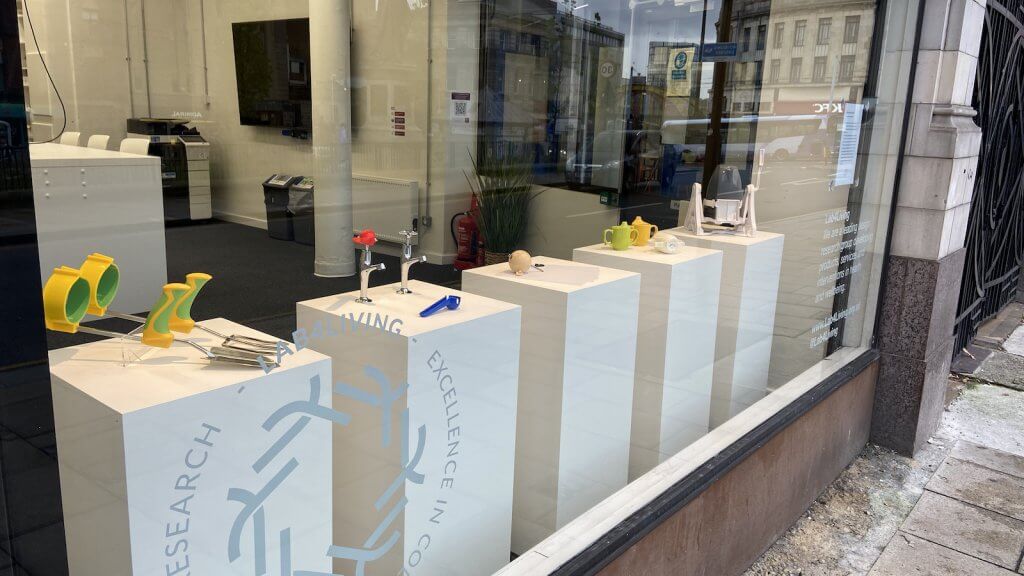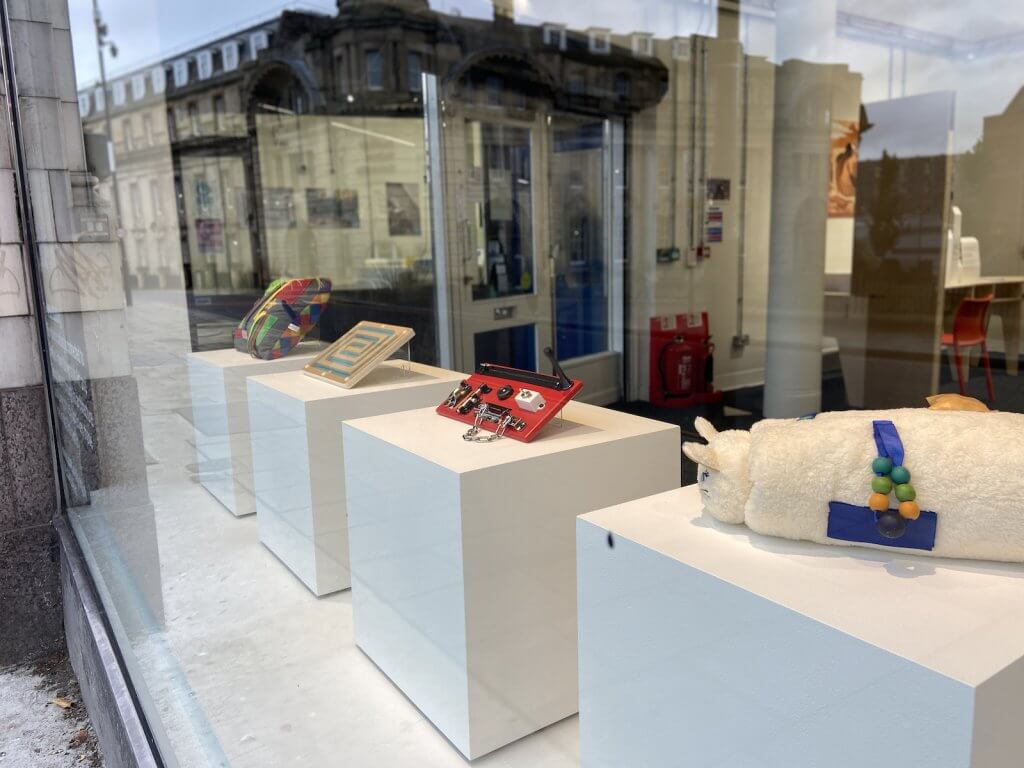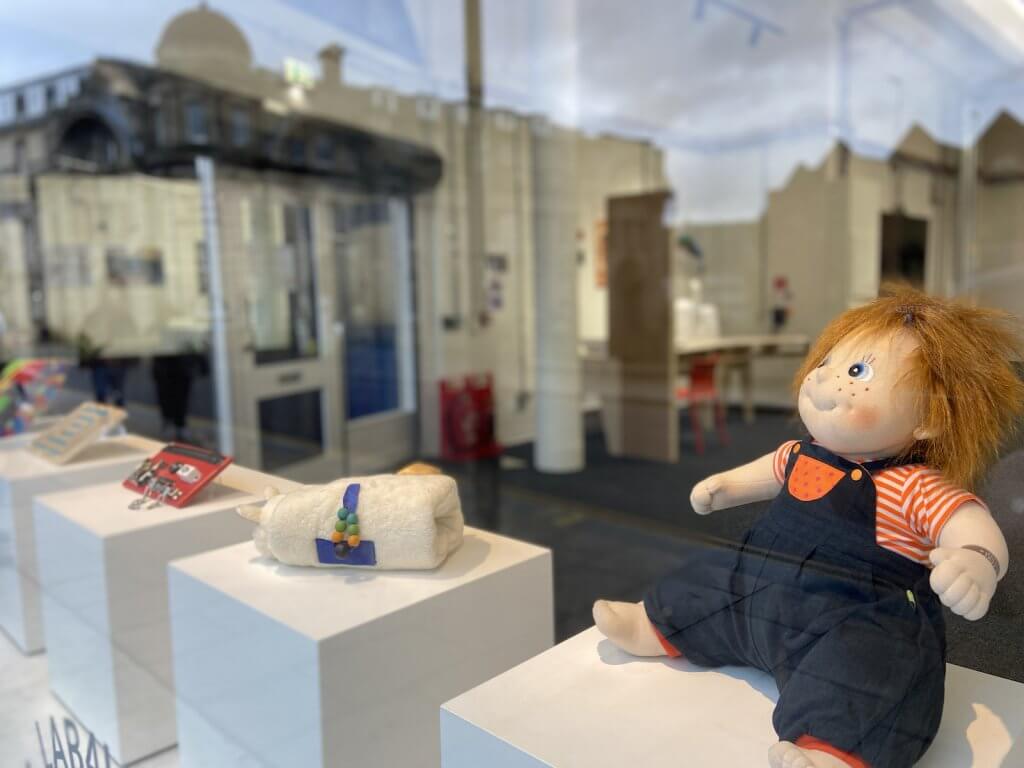12 Nov 2021
This month, we showcase work which explores and responds to themes of ageing. We host an exhibition of poetry work re-imagines ageing, reflecting on the lived experience. In the windows, we display existing products for older people as prompts for examining the role of objects and what it means to be an older person.
Key to Lab4Living’s approach is the use of exhibitions to helps us seek out and frame questions about how we want to live and how the 100 year life might look. Through exhibition, objects and words act as prompts and provide a forum for conversation. The objects and exhibition in the White Building this month are themed around ageing.
As part of Lab4Living’s Research England funded research on the 100-year life we are developing the use of creative methods to give voice to different perspectives of ageing. We aim to build understanding of the experiences of individuals and to examine the role of objects in shaping what it means to be an older person. Work currently on view in the White Building spotlights enquiries from different perspectives, one led by occupational therapist Joan Healey, and the other by product designer Tom Maisey.
Re-Imagining Poetry
Work work by Joan Healey explores how the written word can illuminate the lived experience, helping to facilitate meaningful engagement and contribute to health and wellbeing education.
Dr Joan Healey is an occupational therapist and writer in the Faculty of Health, Wellbeing and Life-Sciences at Sheffield Hallam University. She has joined the Lab4Living team and has been exploring what ageing feels like.
Joan began this project by contacting some writing groups who were meeting online during the pandemic and inviting them to participate in some creative writing. She provided some writing prompts as a starting point for people to write prose or poetry about issues around ageing, the mismatch of external views of ageing and the personal feelings of ageing; people’s experiences of time; the lived experience of their own ageing. Joan facilitated some of the groups and other groups ran the workshops themselves. People were invited to contribute any of their writing to the project.
Exhibition
A selection of pieces of writing from over 100 contributions is being exhibited as posters in the White Building.
We want to celebrate the thoughtful, challenging and beautifully evocative writing from the participants and to use the writing as prompts for debate and discussion about how we view ageing.
Joan Healey
One intention is to use the collection of writing with Sheffield Hallam students in the College of Health, Wellbeing and Life Sciences (including Occupational Therapy students) and with the public.
Lab4Living will host an event on Tuesday 16 November which gives a chance for the participants to meet and see some of their work presented. The event will include live poetry readings. Following the exhibition, Joan hopes to produce an anthology of the all the work which will celebrate the work of the participants and support undergraduate teaching in Health and Wellbeing.
- Further info: For more information about how you can view the exhibition and / or get involved, please contact Joan Healey.
- Project partners: Sheffield Libraries, Sheffield Women’s writing group, SWit’CH Swinton writers group, Guildford U3A
The Assistive Product and Activities for People with dementia
Work by Research Associate Tom Maisey is exploring the role of objects in the context of ageing, and the responsibility of designers to consider issues of dignity and respect when designing assistive products for older people. The items in the windows of the White Building are examples of products currently on the market and the audience is invited to respond to the following questions.
The Assistive Product
Are these products desirable?
As we age, we have to make changes to meet our health needs. We might need objects to help us in our daily lives. It’s vital that design responds to this in a sensitive way.
We all want the objects we own and use to look good and be desirable, whatever our age and abilities. Designers have a responsibility to make sure dignity is maintained for those using the products they create. It’s important that products aren’t patronising and have the right look and details. However, many products associated with later life don’t yet meet those needs. There is a need to establish a new aesthetic. The artefacts on exhibition here are examples of the limited product range currently available. We use them as a starting point for discussions about the role of objects and what it means to be an older person.

Activities for people with dementia
Can design provide a better experience for people living with dementia?
Taking part in meaningful activities as we age is crucial in maintaining physical and mental wellbeing as well as quality of life. A lack of desirable, age-appropriate products for people with dementia reduces opportunities for residents in care homes to take part in meaningful activities. It can have a big impact on residents by increasing boredom and depression.
This presents us with an opportunity to respond with design. The artefacts on exhibition are examples of the limited product range currently available.

- Further info: Tom Maisey
- Linked projects: Future Care Home; Future Bathroom

What next?
- Find out more about the White Building’s history here.
- Take a virtual tour.
- Previous What’s On: September
- Read about Lab4Living’s The 100 Year Life, a major programme of research taking place in the White Building.
 to top
to top
